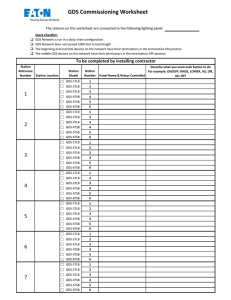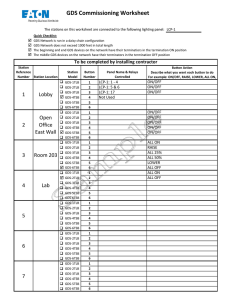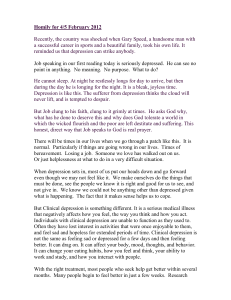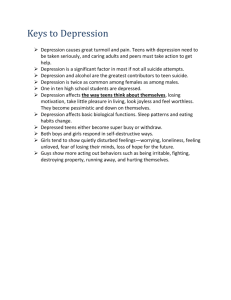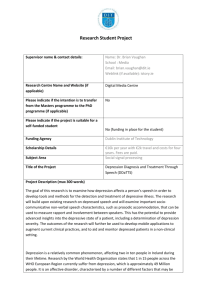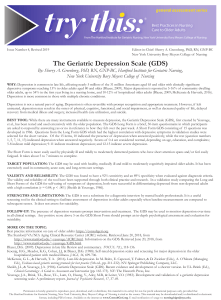GERIATRIC DEPRESSION SCALE (GDS-SV)
advertisement
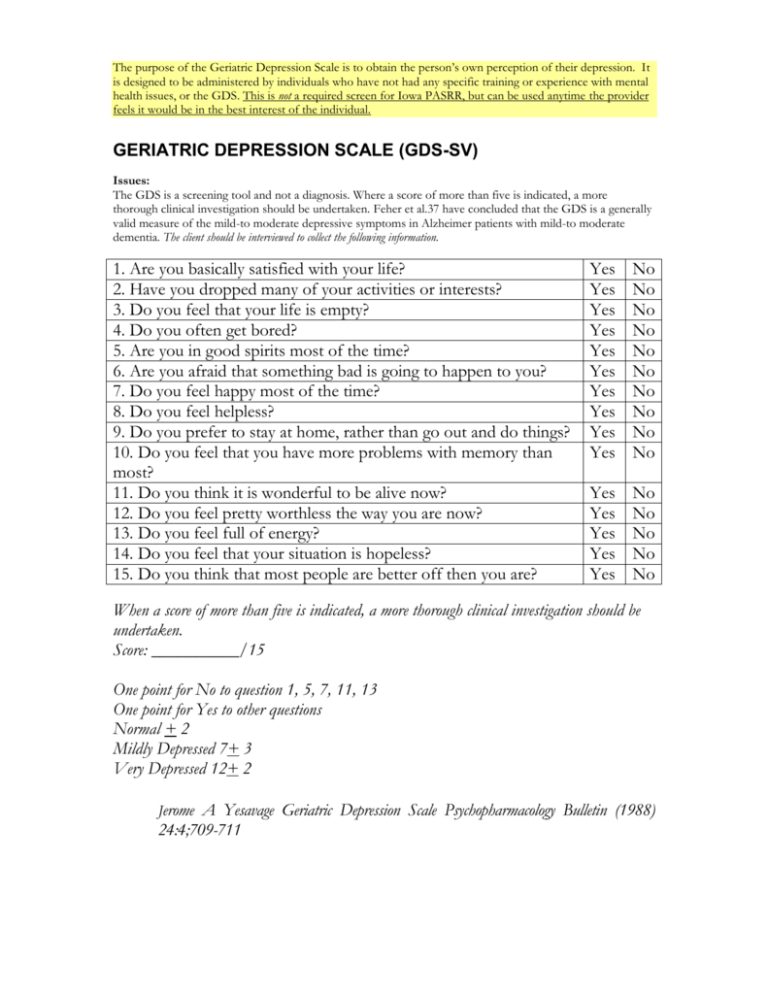
The purpose of the Geriatric Depression Scale is to obtain the person’s own perception of their depression. It is designed to be administered by individuals who have not had any specific training or experience with mental health issues, or the GDS. This is not a required screen for Iowa PASRR, but can be used anytime the provider feels it would be in the best interest of the individual. GERIATRIC DEPRESSION SCALE (GDS-SV) Issues: The GDS is a screening tool and not a diagnosis. Where a score of more than five is indicated, a more thorough clinical investigation should be undertaken. Feher et al.37 have concluded that the GDS is a generally valid measure of the mild-to moderate depressive symptoms in Alzheimer patients with mild-to moderate dementia. The client should be interviewed to collect the following information. 1. Are you basically satisfied with your life? 2. Have you dropped many of your activities or interests? 3. Do you feel that your life is empty? 4. Do you often get bored? 5. Are you in good spirits most of the time? 6. Are you afraid that something bad is going to happen to you? 7. Do you feel happy most of the time? 8. Do you feel helpless? 9. Do you prefer to stay at home, rather than go out and do things? 10. Do you feel that you have more problems with memory than most? 11. Do you think it is wonderful to be alive now? 12. Do you feel pretty worthless the way you are now? 13. Do you feel full of energy? 14. Do you feel that your situation is hopeless? 15. Do you think that most people are better off then you are? Yes Yes Yes Yes Yes Yes Yes Yes Yes Yes No No No No No No No No No No Yes Yes Yes Yes Yes No No No No No When a score of more than five is indicated, a more thorough clinical investigation should be undertaken. Score: __________/15 One point for No to question 1, 5, 7, 11, 13 One point for Yes to other questions Normal + 2 Mildly Depressed 7+ 3 Very Depressed 12+ 2 Jerome A Yesavage Geriatric Depression Scale Psychopharmacology Bulletin (1988) 24:4;709-711
